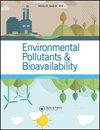壳聚糖粘结剂增强尿素-高岭石肥料释氮性能
Q3 Chemical Engineering
引用次数: 33
摘要
控释肥料的使用已成为减少环境污染的新趋势。在本研究中,将含有20%尿素的尿素高岭石与不同浓度的壳聚糖作为粘合剂混合,经过1小时的干磨,制备氮基CRF。傅里叶变换红外光谱证实了尿素和高岭石之间的氢键。尿素-高岭石与壳聚糖之间的共价相互作用使颗粒更加坚固。在527 nm波长下,用二乙酰一肟量热法每隔5 d测定氮的释放量。结果表明,壳聚糖浓度从3%提高到7.5%,1 d后氮释放量从41.23%下降到25.25%,30 d后氮释放量从77.31%下降到59.27%。断裂压应力试验证实,壳聚糖含量为6%的颗粒具有最高的抗氨挥发性,并选择其进行氨挥发试验。氨挥发采用强制通风技术进行,为期10周。结果表明,常规尿素肥和尿素-高岭石-壳聚糖颗粒的氨损失总量分别为68.63%和56.75%。该控释产物在土壤中的溶解度可控,养分利用效率高,具有潜在的经济效益,可用于农作物生产。本文章由计算机程序翻译,如有差异,请以英文原文为准。
Enhancement of nitrogen release properties of urea–kaolinite fertilizer with chitosan binder
The use of controlled release fertilizer (CRF) has become a new trend to minimize environmental pollution. In this study, urea–kaolinite containing 20 wt% urea after one hour dry grinding was mixed with different concentrations of chitosan as a binder to prepare nitrogen-based CRF. Fourier transform infrared spectroscopy confirmed the hydrogen bonding between urea and kaolinite. Covalent interaction between urea–kaolinite and chitosan make the granules stronger. The nitrogen release was measured in 5 days interval using a diacetylmonoxime calorimetric method at a wavelength of 527 nm. The results illustrated that by increasing the chitosan concentration from 3 to 7.5%, nitrogen release decreased from 41.23 to 25.25% after one day and from 77.31 to 59.27% after 30 days incubation in water. Compressive stress at break tests confirmed that granules with chitosan 6% had the highest resistance and were chosen for ammonia volatilization tests. Ammonia volatilization was carried out using the forced-draft technique for a period of 10 weeks. The results showed that the total amount of ammonia loss for conventional urea fertilizer and urea–kaolinite–chitosan granules was 68.63 and 56.75%, respectively. This controlled release product could be applied in agricultural crop production purpose due to its controlled solubility in the soil, high nutrient use efficiency and potential economic benefits.
求助全文
通过发布文献求助,成功后即可免费获取论文全文。
去求助
来源期刊
CiteScore
1.62
自引率
0.00%
发文量
0
审稿时长
1 months
期刊介绍:
Chemical Speciation & Bioavailability ( CS&B) is a scholarly, peer-reviewed forum for insights on the chemical aspects of occurrence, distribution, transport, transformation, transfer, fate, and effects of substances in the environment and biota, and their impacts on the uptake of the substances by living organisms. Substances of interests include both beneficial and toxic ones, especially nutrients, heavy metals, persistent organic pollutants, and emerging contaminants, such as engineered nanomaterials, as well as pharmaceuticals and personal-care products as pollutants. It is the aim of this Journal to develop an international community of experienced colleagues to promote the research, discussion, review, and spread of information on chemical speciation and bioavailability, which is a topic of interest to researchers in many disciplines, including environmental, chemical, biological, food, medical, toxicology, and health sciences.
Key themes in the scope of the Journal include, but are not limited to, the following “6Ms”:
Methods for speciation analysis and the evaluation of bioavailability, especially the development, validation, and application of novel methods and techniques.
Media that sustain the processes of release, distribution, transformation, and transfer of chemical speciation; of particular interest are emerging contaminants, such as engineered nanomaterials, pharmaceuticals, and personal-care products.
Mobility of substance species in environment and biota, either spatially or temporally.
Matters that influence the chemical speciation and bioavailability, mainly environmentally relevant conditions.
Mechanisms that govern the transport, transformation, transfer, and fate of chemical speciation in the environment, and the biouptake of substances.
Models for the simulation of chemical speciation and bioavailability, and for the prediction of toxicity.
Chemical Speciation & Bioavailability is a fully open access journal. This means all submitted articles will, if accepted, be available for anyone to read, anywhere, at any time. immediately on publication. There are no charges for submission to this journal.

 求助内容:
求助内容: 应助结果提醒方式:
应助结果提醒方式:


